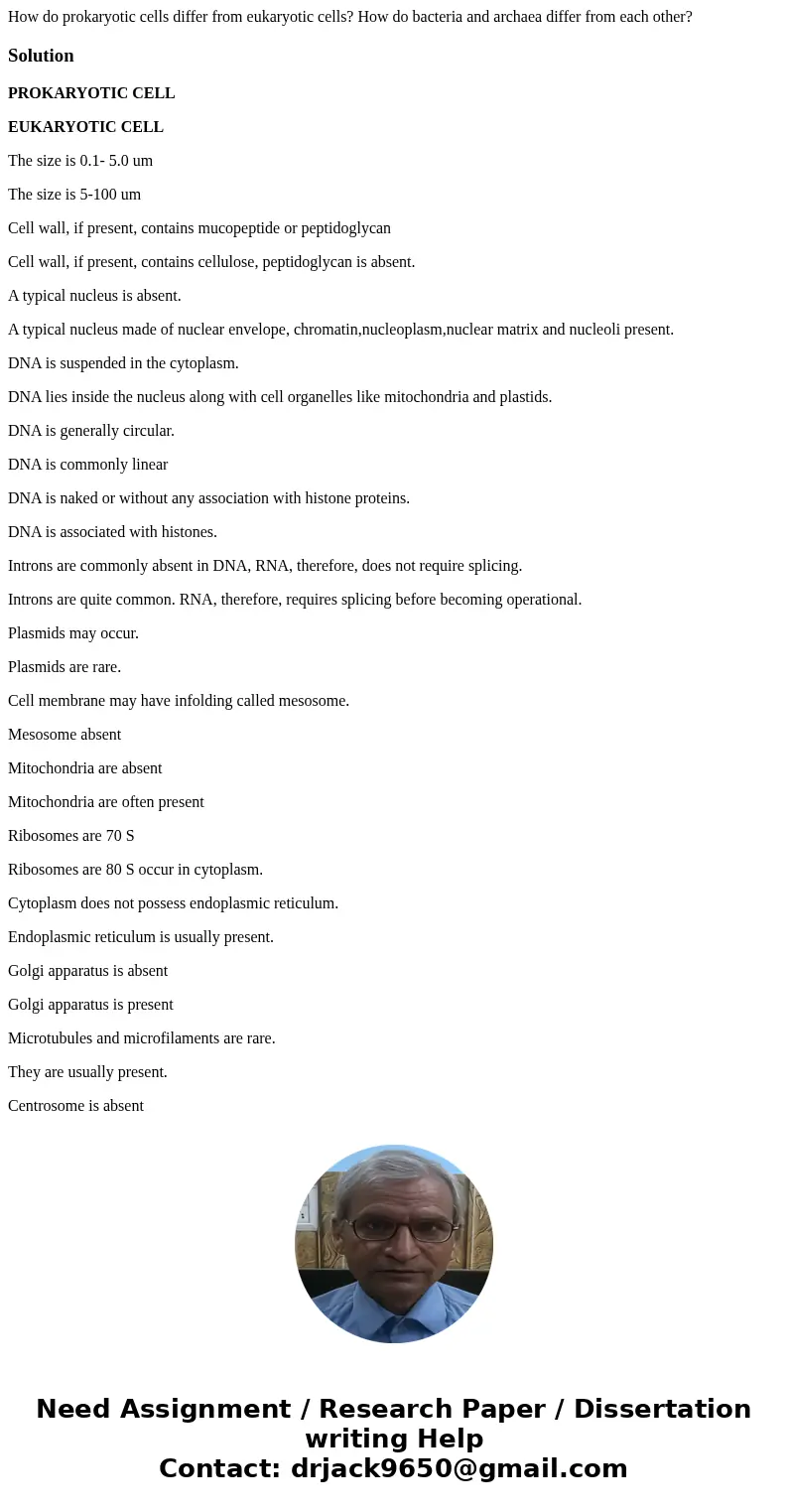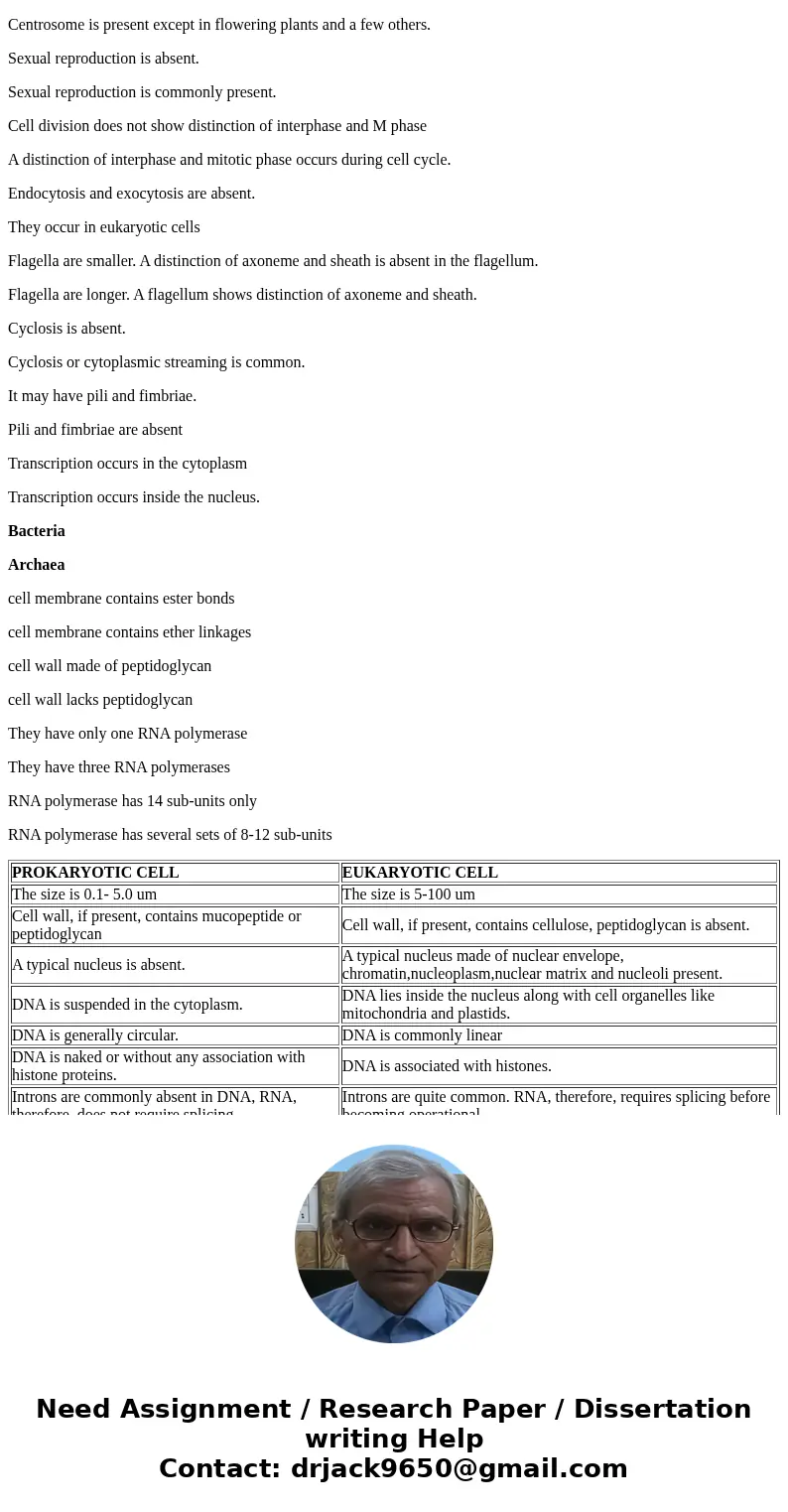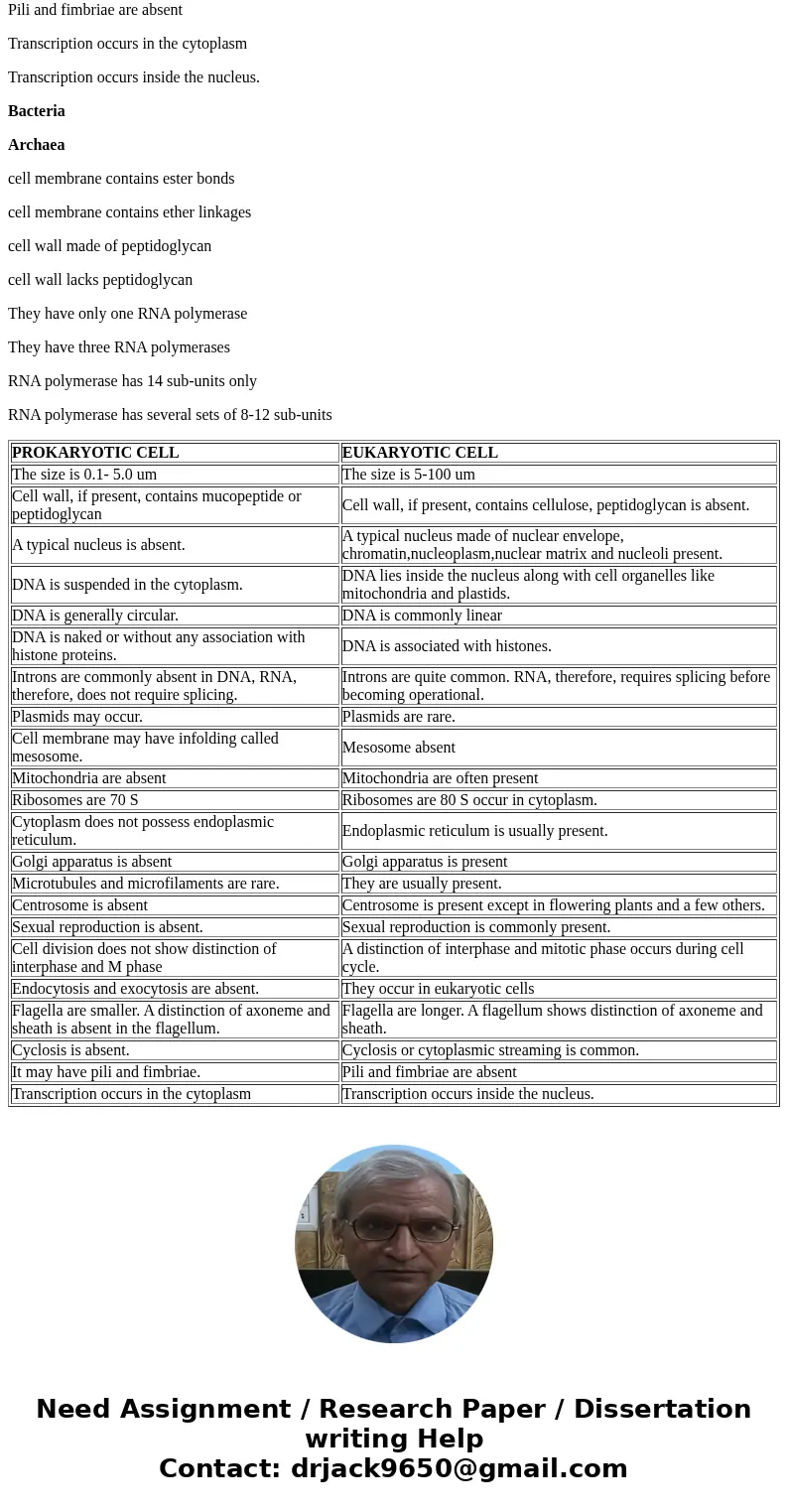How do prokaryotic cells differ from eukaryotic cells How do
Solution
PROKARYOTIC CELL
EUKARYOTIC CELL
The size is 0.1- 5.0 um
The size is 5-100 um
Cell wall, if present, contains mucopeptide or peptidoglycan
Cell wall, if present, contains cellulose, peptidoglycan is absent.
A typical nucleus is absent.
A typical nucleus made of nuclear envelope, chromatin,nucleoplasm,nuclear matrix and nucleoli present.
DNA is suspended in the cytoplasm.
DNA lies inside the nucleus along with cell organelles like mitochondria and plastids.
DNA is generally circular.
DNA is commonly linear
DNA is naked or without any association with histone proteins.
DNA is associated with histones.
Introns are commonly absent in DNA, RNA, therefore, does not require splicing.
Introns are quite common. RNA, therefore, requires splicing before becoming operational.
Plasmids may occur.
Plasmids are rare.
Cell membrane may have infolding called mesosome.
Mesosome absent
Mitochondria are absent
Mitochondria are often present
Ribosomes are 70 S
Ribosomes are 80 S occur in cytoplasm.
Cytoplasm does not possess endoplasmic reticulum.
Endoplasmic reticulum is usually present.
Golgi apparatus is absent
Golgi apparatus is present
Microtubules and microfilaments are rare.
They are usually present.
Centrosome is absent
Centrosome is present except in flowering plants and a few others.
Sexual reproduction is absent.
Sexual reproduction is commonly present.
Cell division does not show distinction of interphase and M phase
A distinction of interphase and mitotic phase occurs during cell cycle.
Endocytosis and exocytosis are absent.
They occur in eukaryotic cells
Flagella are smaller. A distinction of axoneme and sheath is absent in the flagellum.
Flagella are longer. A flagellum shows distinction of axoneme and sheath.
Cyclosis is absent.
Cyclosis or cytoplasmic streaming is common.
It may have pili and fimbriae.
Pili and fimbriae are absent
Transcription occurs in the cytoplasm
Transcription occurs inside the nucleus.
Bacteria
Archaea
cell membrane contains ester bonds
cell membrane contains ether linkages
cell wall made of peptidoglycan
cell wall lacks peptidoglycan
They have only one RNA polymerase
They have three RNA polymerases
RNA polymerase has 14 sub-units only
RNA polymerase has several sets of 8-12 sub-units
| PROKARYOTIC CELL | EUKARYOTIC CELL |
| The size is 0.1- 5.0 um | The size is 5-100 um |
| Cell wall, if present, contains mucopeptide or peptidoglycan | Cell wall, if present, contains cellulose, peptidoglycan is absent. |
| A typical nucleus is absent. | A typical nucleus made of nuclear envelope, chromatin,nucleoplasm,nuclear matrix and nucleoli present. |
| DNA is suspended in the cytoplasm. | DNA lies inside the nucleus along with cell organelles like mitochondria and plastids. |
| DNA is generally circular. | DNA is commonly linear |
| DNA is naked or without any association with histone proteins. | DNA is associated with histones. |
| Introns are commonly absent in DNA, RNA, therefore, does not require splicing. | Introns are quite common. RNA, therefore, requires splicing before becoming operational. |
| Plasmids may occur. | Plasmids are rare. |
| Cell membrane may have infolding called mesosome. | Mesosome absent |
| Mitochondria are absent | Mitochondria are often present |
| Ribosomes are 70 S | Ribosomes are 80 S occur in cytoplasm. |
| Cytoplasm does not possess endoplasmic reticulum. | Endoplasmic reticulum is usually present. |
| Golgi apparatus is absent | Golgi apparatus is present |
| Microtubules and microfilaments are rare. | They are usually present. |
| Centrosome is absent | Centrosome is present except in flowering plants and a few others. |
| Sexual reproduction is absent. | Sexual reproduction is commonly present. |
| Cell division does not show distinction of interphase and M phase | A distinction of interphase and mitotic phase occurs during cell cycle. |
| Endocytosis and exocytosis are absent. | They occur in eukaryotic cells |
| Flagella are smaller. A distinction of axoneme and sheath is absent in the flagellum. | Flagella are longer. A flagellum shows distinction of axoneme and sheath. |
| Cyclosis is absent. | Cyclosis or cytoplasmic streaming is common. |
| It may have pili and fimbriae. | Pili and fimbriae are absent |
| Transcription occurs in the cytoplasm | Transcription occurs inside the nucleus. |



 Homework Sourse
Homework Sourse